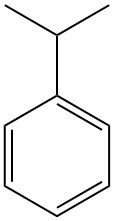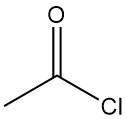
Calone 1951 or watermelon ketone is a synthetic organic compound with the formula C11H12O2. It is a white powder with a fresh, marine odor. Watermelon ketone is used in the fragrance industry to create fresh aquatic marine notes.
Watermelon ketone is not actually found in watermelons. It is named after watermelons because its odor is similar to the smell of watermelon rind.
Table of Contents
1. Properties of calone 1951
Calone 1951 (7-methylbenzo[β][1,4]dioxepin-3-one, 4), discovered by Beereboom, Cameron, and Stephens at Pfizer in 1966, played a minor role in perfumery for many years. It was used as a trace component in some floral perfumes, but it was not until the early 1990s that it became a key ingredient in the marine fragrance trend.
| Property | Value |
|---|---|
| CAS registry number | 28940-11-6 |
| International Union of Pure and Applied Chemistry (IUPAC) name | 7-methyl-2H-1,5-benzodioxepin-3(4H)-one |
| Molecular weight | 184.2 g/mol |
| Melting point | 35-41 °C |
| Boiling point | 250-255 °C |
| Solubility in water | Insoluble |
| Solubility in other solvents | Soluble in ethanol, acetone, and hexane |
| Solubility in DMSO | 50 mg/mL |
| Density | 1.35 at 21.6 °C |
| Flash point | 135 °C at 102.41 kPa |
| Auto-ignition temperature | > 350 °C |
| Vapour pressure | 0.87 Pa at 25 °C |
2. Production of Calone 1951
The production methods for Calone 1951 detailed in the literature can be classified into three distinct procedures based on the starting materials employed:
2.1. Production of Calone 1951 from 4-methylcatechol and methyl bromoacetate
In this procedure, Calone 1951 is synthesized using 4-methylcatechol and methyl bromoacetate. This method involves a series of sequential reactions, including the Williamson reaction, Dieckmann condensation, and hydrolysis–decarboxylation reactions. The resulting yield of Calone 1951 using this method can reach as high as 57%.

Within the synthesis process of Calone 1951 from 4-methylcatechol and methyl bromoacetate, the initial step is the creation of a first intermediate known as 4-methylcatechol dimethylacetate (MCDA) by the Williamson reaction.
This reaction is characterized as a nucleophilic substitution process, where the efficiency relies on the activity of the alkylating reagent used. Notably, methyl iodoacetate is considered a more potent alkylating agent than methyl bromoacetate due to the higher reactivity of iodides in alkylation reactions.
However, due to its expense and instability, methyl iodoacetate cannot be directly employed in the reaction.
The uses of potassium iodide (KI) as a catalyst in the Williamson reaction with methyl bromoacetate as the alkylating agent and introduces potassium iodide (KI) as a catalyst in the Williamson reaction generates methyl iodoacetate by a substitution reaction.

Methyl iodoacetate then reacts with 4-methylcatechol to produce MCDA. Given the enhanced reactivity of methyl iodoacetate compared to methyl bromoacetate, the introduction of KI augments the yield of MCDA to 95% and the overall yield of watermelon ketone to 68%.
2.2. Production from 4-methylcatechol and chloroacetonitrile
This method involves a sequence of etherification, condensation, and acidification reactions using 4-methylcatechol and chloroacetonitrile. This leads to the synthesis of Calone 1951, achieving a product yield of up to 51%.

4-Methylcatechol is reacted with finely powdered K2CO3 in acetone to produce potassium salt. Chloroacetonitrile is added and the mixture is heated to reflux. Filtration and recrystallization yield compound (1).
Compound (1) reacts with potassium t-butoxide in dry DMSO. After stirring, the mixture is treated with dilute acetic acid. The crude product is collected, washed, and recrystallized, giving compound (2).
Acidification of (2) is carried out using water, acetic acid, and phosphoric acid under reflux. After extraction and purification, the Calone 1951 (watermelon ketone) is obtained as a white crystals.
2.3. Production from 4-methylcatechol and 1,3-dichloroacetone
The production of watermelon ketone by the reaction of 4-methylcatechol and 1,3-dichloroacetone involves a multistep process.

The process begins by introducing a sodium carbonate solution and 4-methylcatechol into a reaction vessel under nitrogen protection. The temperature of the mixture is then carefully controlled within the range of 60 to 80 °C for a period of 1 to 2 hours. This step allows the reaction to proceed while ensuring the desired temperature range is maintained.
Following this, toluene is introduced into the reaction vessel to completely eliminate water by heating at normal pressure. Organic alkali and iodinated amine are subsequently added to the mixture, giving specific reactivity to the reaction medium.
The main reaction takes place with the introduction of a mixed solution containing 1,3-dichloroacetone, 3-dichloroacetone, and butanone while maintaining a temperature between 60 and 80 °C. The reaction is allowed to progress for a duration of 3 to 5 hours.
After the reaction is complete, the mixture is cooled, and the crude product is obtained by filtration. Toluene, which is used in the process, is recovered during this stage.
To purify the crude product, it is washed with sodium sulfate solution until a neutral pH is achieved.
The pure watermelon ketone is obtained by reduced pressure distillation. The resulting distillate is then recrystallized using a mixture of acetone and hexane. This process results in the formation of white crystalline solid watermelon ketone with a yield up to 80%.
This production method offers several advantages, including ease of reaction condition control, simplicity of operation, high yield coefficient, and cost-effectiveness. It also prioritizes safety and environmental considerations.
3. Uses of Calone 1951
The first perfumes to popularize watermelon keton were New West for Her (1990), Escape (1991), Kenzo pour Homme (1991), and L’Eau d’Issey pour Homme (1994). These perfumes all featured a fresh, marine scent that was created by using calone 1951 as a key ingredient.
The marine fragrance trend reached its peak in the late 1990s with the release of Polo Sport Woman (1996) and Cool Water Woman (1997). These perfumes were even more heavily dosed with calone 1951 than their predecessors, and they helped to solidify the marine scent as a popular fragrance trend.
The marine fragrance trend has since declined in popularity, but it still has a presence in the perfume industry. Recent releases such as Aquawoman (2002) BOSS Element (2009) and Salty (2018) continue to use calone 1951 to create a fresh, marine scent. It is likely that the marine fragrance trend will make a comeback in the future, as it is a popular scent for both men and women.
In addition to its use in fragrances, watermelon ketone is also used in some food flavorings. It is often used to give a fresh, marine flavor to candy, gum, and ice cream.
4. Toxicology
Watermelon ketone is a safe and non-toxic compound. It is not considered to be a skin irritant or sensitizer. However, it is important to note that watermelon ketone is a volatile compound, which means that it can easily evaporate. This can cause some people to experience headaches or dizziness if they are exposed to high concentrations of watermelon ketone.
Overall, watermelon ketone is a safe and versatile compound with a variety of uses. It is a popular ingredient in fragrances and food flavorings, and it is also used in some industrial applications. If you are looking for a fresh, marine scent, watermelon ketone is a great option.
References
- KI-catalysed synthesis of 4-methylcatechol dimethylacetate and fragrant compound Calone 1951®. – https://link.springer.com/article/10.2478/s11696-013-0359-z
- https://static.cymitquimica.com/products/TM/pdf/sds-T13965.pdf
- http://www.thegoodscentscompany.com/data/rw1002352.html
- https://cdnsciencepub.com/doi/pdf/10.1139/v75-320
- Synthesis method of watermelon ketone. – https://patents.google.com/patent/CN103058984A/en
- Conception, Characterization and Correlation of New Marine Odorants. – https://chemistry-europe.onlinelibrary.wiley.com/doi/abs/10.1002/ejoc.200300174




